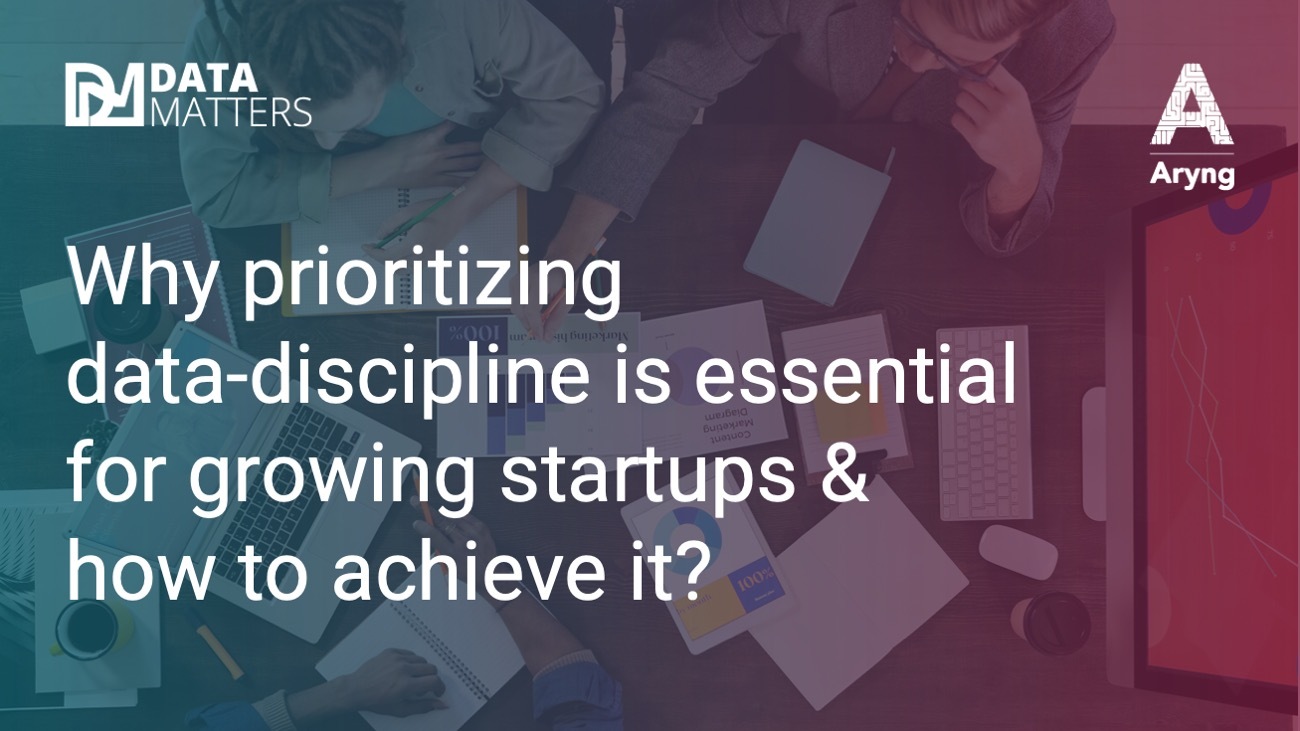A data analyst, Eric discovered a troubling trend in his company’s customer data. The churn rate was alarmingly high.
Concerned about the impact on the business, he mobilized his team to investigate the problem.
Eric and the team spent significant time and resources to find issues and recommended operational changes. However, the recommendation did not impact revenue slowdown or drop in customer lifetime value.
Would you consider this data project a success or a failure?
Yes, Eric and the team found some issues, but can we call the project a success if the ROI is insignificant?

Data is the lifeblood of modern businesses. It’s the key to unlocking valuable insights and making informed decisions that drive growth and success. Despite the potential of data, not all data projects deliver the impact they promise.
As per the Gartner survey, 85% of all data projects fail. Why do so few data projects succeed while most fail?
Let’s see the top 5 reasons why data projects fail so you can avoid these common pitfalls and increase the chances of success.
1. Lack of business use case: A clear business use case acts as a goal, directing the data project to its desired outcome and avoiding getting lost in data.
A well-defined business use case must articulate the purpose and objectives of the data project, align with the overall data strategy, and have a solid business rationale.
Neglecting the importance of a specific business use case may result in the inability to identify critical business questions and limit the potential of the data project.
2. Absence of solid and clear hypotheses: Well-designed hypotheses are crucial for guiding a data team toward its goal. They function like a roadmap, providing clear direction and structure. Ensuring success requires more than just crafting hypotheses. The quality and availability of data used to test them and hypotheses must be continuously tested.
Considering multiple possibilities can lead to a more successful project, making it easier to identify the best path forward and maximize potential outcomes. Careful crafting of hypotheses is key to creating a roadmap that guides data teams toward meaningful insights and valuable outcomes.
Let’s examine the business case discussed earlier.
Instead of the traditional approach of spending weeks analyzing correlations between churn drivers, Eric should have first gathered insights from relevant teams like product, marketing, and data. The discussions would lead to hypotheses that should be tested. For example:
- There are errors in subscriber information collection, causing incorrect data recording and
- The information is being misinterpreted due to flawed data architecture.
Once the clear hypotheses are in place, evaluation of the hypotheses can determine the root cause of the churn.
This way, a hypothesis-driven approach saves crucial time and prevents scattered efforts.
3. Unengaged or low data literacy stakeholders: A lack of engagement and knowledge among stakeholders can harm data project success.
Let’s again continue with Eric, the analyst example. His data project’s success relies on only his team’s capability and how data-literate his stakeholders – the ones who will take action, are. If they don’t believe in the insights, they won’t take any action, and the insights will go to waste.
Organizations – big or small often undermine the data literacy of non-data folks. Investing in the data literacy of key business function stakeholders can heavily skew in favor of data project success.
4. Not having a single source of truth: Let’s see what the challenges of data from multiple sources are:
- Inconsistent data
- Duplicated effort
- Lack of trust in data
- Inefficient processes
- Difficulty in auditing and compliance
Organizations should adopt a single source of truth (SSOT) approach that is both strategic and scalable. This requires designating a primary data source for each use case and ensuring other sources align.
Implementing a well-instrumented single source of truth (SSOT) offers numerous benefits, including a central repository of accurate metrics trusted by everyone in the organization, quick access to KPIs and driver metrics, accelerated decision-making, aligned stakeholder discussions, and fostering a data-driven culture.
Side note: While you may have all the right data in place, biases in data can significantly impact the success of data projects if you are not careful.
Data biases can arise from various sources, including data collection methods, the algorithms used to process data, and the individuals interpreting the data. When data is biased, it can lead to incorrect conclusions and negatively affect the outcomes of data projects.
5. Taking Action Before Planning: Before jumping into data treatment, it’s essential to take a step back and think about the bigger picture. In both data analytics and data engineering, it’s crucial to plan first
For Data Engineering:
In data engineering, it’s crucial to plan first by considering the overall objective of your project and business-focused planning. This helps you decide what data sources to use, how data will be stored, and how it will flow between systems.
Investing time and resources into designing a robust architecture is crucial for the success of a data engineering project.
A well-planned data architecture ensures that your data management efforts are aligned with your business goals, avoiding the challenges of poorly designed systems, such as higher costs, longer downtime, data consistency errors, and security risks.
For Data Analytics/Data Science:
To begin the data treatment process, planning and considering the bigger picture is crucial; planning helps you decide what data sources to use and how to approach the analysis. A well-planned approach to data analytics aligns with your business goals, ensuring that your efforts are directed toward achieving desired outcomes.
Inadequate planning can lead to subpar results and decreased efficiency, ultimately impacting the project’s success. It’s essential to ensure that the data used is relevant, high-quality, and aligned with the project’s objectives to achieve accurate and actionable insights.
Conclusion

In conclusion, successful data projects require a combination of factors, including a clearly defined business question, a focused approach, engaged stakeholders, reliable data, and well-defined data architecture that can help organizations turn data insights into tangible business outcomes.
Also Read: How analytics can save startups from failing.









